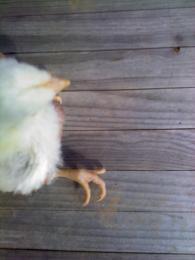I have Blue Wheaten/Wheaten Ameraucana's that I purchased as chicks from a BYC member a year ago. One of the roosters had two crooked toes when I bought him. The way they looked I thought his foot had gotten broken. I notified the seller at the time.
This year I have hatched several chicks and so have others. One of the people that hatched chicks reported back that two of her chicks had similar crooked toes. I'm assuming this is a genentic issue but is there any chance its just coincidence?

edited to add picture
This year I have hatched several chicks and so have others. One of the people that hatched chicks reported back that two of her chicks had similar crooked toes. I'm assuming this is a genentic issue but is there any chance its just coincidence?

edited to add picture
Last edited:



